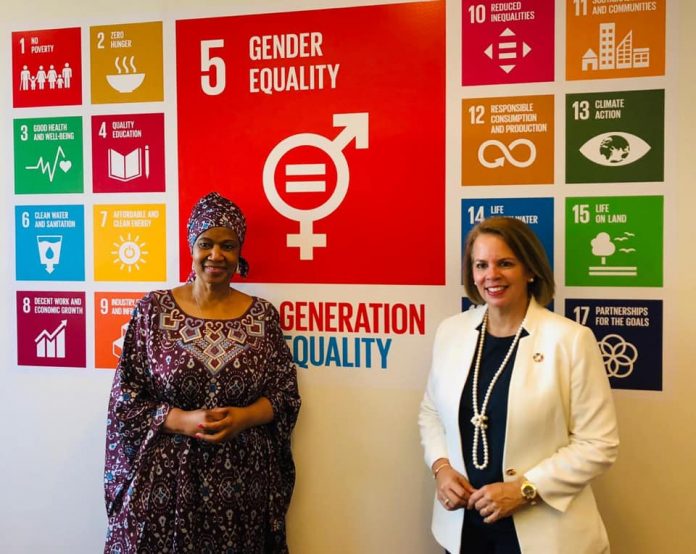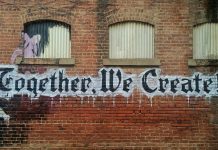A new month for the Creative Islander means a new goal of the month. Each month we highlight one of the seventeen sustainable development goals (SDG) from the United Nations. Since its emergence, Aruba together with other countries have committed themselves to the implementation and achievement of these goals. The month of March is dedicated to all the women and young girls on Aruba. Soon on March 8th we will be celebration International Women’s Day all over the world, and on Aruba. So, that is why this month the Creative Islander will be addressing SDG 5, which focusses on gender equality and women participation.
Women have come a long way over the decades, but the work to be completed is still immense. Considering the approach of the Cultural & Creative Industry (CCI) in contrast to other economies, inclusion and diversity remains a beautiful attribute that sets apart the CCI from the rest. Not only can we consider Aruba as a creative island, but overall, women on the island are very talented, innovative and resourceful. Developing the Aruban Creative Industry will not only foster economic benefits, but will stimulate more opportunities for the marginalized and might provide a diversified social protection option. In the words of our first female Prime Minister “I believe firmly that we must provide women more opportunities, especially our young girls. My mission is to create a better Aruba” – Evelyn Wever-Croes, September 23rd 2019.
Some simple examples of these developments internationally could be the Creative Europe Programme of the European Union. The EU Framework for Action on Cultural Heritage, Cultural, and Creative Sectors and Local Development, is implemented by the OECD and aims to provide evidence and guidance to cities and regions on ways to maximize the economic and social value of cultural heritage and support the emergence of the creative economy. This project works in four different areas: 1. Maximizing the impact of culture and cultural heritage on local development; 2. Increasing the jobs potential of cultural and creative industries, especially for women; 3. Supporting business creation, innovation and growth; and 4. Public and private finance for culture and creative sectors (OECD, 2020). Besides this, there are numerous programs in Asia, Latin America, Central America, Africa, and the Pacific’s, where women have been the leaders, entrepreneurs, and front runners of the Creative Industries.
SDG Breakdown
The essence of focusing on gender equality and women participation is different for each country. For Aruba one of the main goals is to the recognize gender equality as a priority and to include this into legislative and public policy agenda’s. In 2019 Aruba and UN Women agreed to collaborate with each other to ensure that the island is taking the time to prioritize the development and well-being of women on Aruba. However, while these initiatives provide a breakthrough, many times they don’t get the proper follow through due to other priorities or lack of guidance, resources, and knowledge on how to start. SDG 5 is comprised into 6 main indicators, and for Aruba priorities should include: End all forms of discrimination against all women and girls everywhere; Eliminate all forms of violence against all women and girls in the public and private spheres, including trafficking and sexual and other types of exploitation; Recognize and value unpaid care and domestic work through the provision of public services, infrastructure and social protection policies and the promotion of shared responsibility within the household and the family as nationally appropriate; Ensure women’s full and effective participation and equal opportunities for leadership at all levels of decision-making in political, economic and public life; and ensure access to sexual and reproductive health and reproductive rights.
Women in the Creative Industry
It is not a secret that women dominate the creative industry but experience the same struggles of meeting or even breaking the glass ceiling. Cultural & Creative Industries “tend to favor the participation of women compared with more traditional industries. In many developing countries and transition economies, women creators are more likely to be found in folk art sector” (Franken, 2018). Seemingly, UNCTAD (2010) highlight that as many women work in the Creative Industry, “the creative economy can also play a catalytic role in promoting gender balance in the creative workforce, particularly in developing countries. It can also facilitate greater absorption into the formal national economies of some categories of generally marginalized talented workers involved in creative activities who are usually relegated to the informal sector of the economy” (p. 24).
A Quadruple Responsibility
The gender equality discussion and thereafter the responsibility is a shared between four very key stakeholders, which are the government, the private sector, academia, and civil society. The implementation and achievement of the SDGs should be done in a holistic manner, because simply: it was design to be collaborative and multi-disciplinary. By mainstreaming gender equality into all areas of public policy, corporate sustainability, civil advocacy, higher education, and awareness campaigns all four stakeholder groups can align their strategies and operations to this global goal and local priority. This by systematically and strategically scaling up actions which support the development and livelihoods of women and girls in Aruba.
The empowerment of women and girls is a fundamental human right, and is a critical component for expanding and diversifying Aruba’s economic growth, promotion of social protection, and the enrichment of local business development. The responsibility for Aruban businesses goes beyond the baseline and should support and give equal opportunities for women and girls within the labor force. According to the SDG compass (2020) as “the engine for 90 percent of jobs in developing countries, technological innovation, capital creation and investment, responsible business is critical to the advancement of women’s and girls’ empowerment around the world. With a growing business case, private sector leaders are increasingly developing and adapting policies and practices, and implementing cutting edge initiatives, to advance women’s empowerment within their workplaces, marketplaces and communities”. Some of the indicators businesses should consider are for example active policies on zero tolerance for gender-based violence and harassment, zero gender discrimination for new hires, equal salary and remuneration between men and women, and zero discrimination for women who choose to become a mother just to mention a few.
In a case research case of women in the creative industry in Indonesia, the results show that “after several explanations, it can be seen that training and learning factors are key in maintaining the business. With training and learning in good quality then this business will be growing quickly. The other factors (leadership style factors, education background, resources, achievement, experience, need for autonomy, role models and management commitment) also greatly influence the leadership style of business performance (Santi Setyaningsih et al., p.222, 2012). Higher education and training institutions play an important role in this matter. This result is highly supported by the OECD (2020) as they express that the “demand for skilled creative workers is strong and rapidly evolving, both in cultural and creative sectors and other sectors of the economy. To reap these job creation benefits, cities and regions need more reliable data to shape their policies and address the needs of creative employers and self-employed creatives”. Interestingly, “from the report ‘Enseñansa na Aruba: Relato Estadistico 2016-2017’ (Education in Aruba: Statistical Report 2016-2017) in 2016, females represent approximately 50% of the total student population of Aruba. However, looking at relevant sectors such as the science & technology department at the EPI, only 10% of the 337 students in 2016 are female, thus a low female participation rate in the sciences. On the other hand, looking at female participation in higher education, in 2016 this reached 67% at the University of Aruba and 94% at the IPA, thus a high female participation rate in remaining fields” (Franken, 2019). The issue is not that women don’t participate, because clearly they do, but rather it is on providing more equal access on all areas in their development and lives.
Moving Forward
The gender issue we have been facing for decades on the island is now shifting into more of a public debate and state of awareness. We are now daring to talk, to ask questions, to raise our voices, but are we willing to walk the talk. The SDGs are merely a policy tool for the government, strategic management benchmark for the public sector, advocacy resource for civil society, but how is Aruba going to secure these women rights? The small steps thus far have been tremendous, but we have a long way to go. The collaboration and the quadruple responsibility will remain important moving forward. In the spirit of the International Day of the Woman on March 8th, the Creative Islander would like to share positive greetings to all women and girls on this special day and to Aruba: “When women participate in the economy, everyone benefits” – Hilary Clinton.












